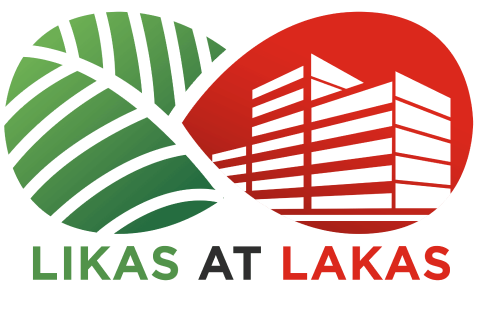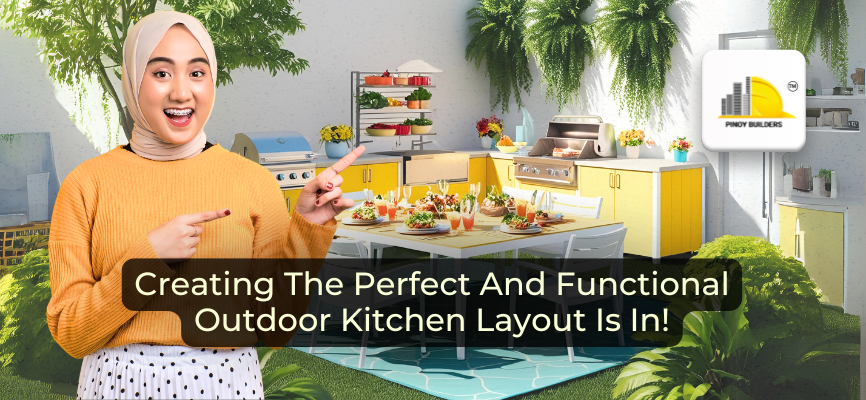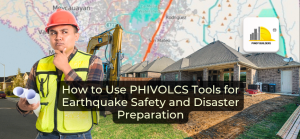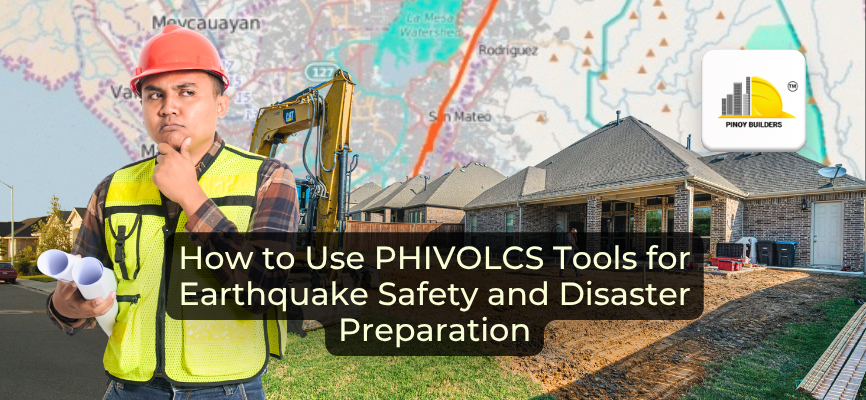The Filipino “dirty kitchen” has served as a reliable spot for cooking, keeping smoke and strong food smells out of the main living area. Over time, however, changing lifestyles and the growing popularity of extending life outdoors have inspired homeowners to rethink this space completely. Outdoor kitchens today combine practicality with style, built to handle the weather while creating a welcoming environment that’s perfect for both cooking and hanging out.
Thoughtful design makes it possible to tailor the layout to fit Filipino cooking habits and make the most of the available space. In this article, we will explore how to create an outdoor kitchen layout that blends function and comfort, turning a simple cooking area into the heart of your home’s outdoor life.
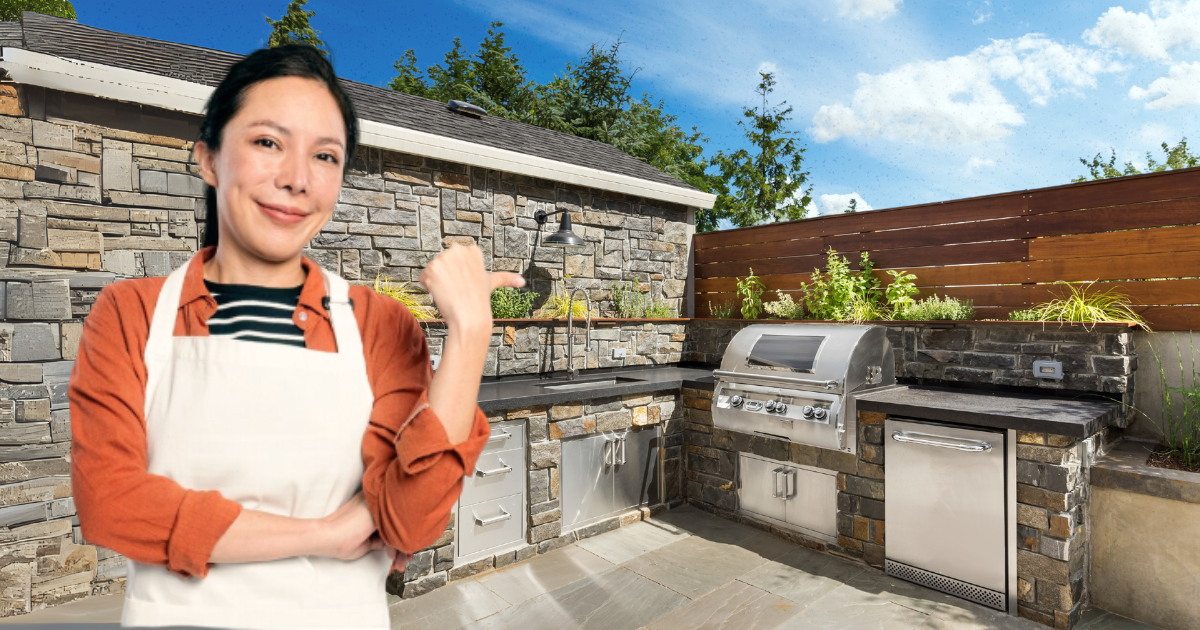
Plan the Perfect Outdoor Kitchen Layout
There’s more to an outdoor kitchen than just a stove and a small counter. To design one that feels dynamic and serves the functionality you need to cook without obstructions, make sure to plan from the ground up.
Start by measuring your available space carefully; this means that instead of buying a stove and then working it into the available outdoor space, measure the space first, and then plan what goes in the kitchen. After all, an efficient layout helps avoid crowding and supports smooth movement. .
Consider these tips:
- Similar to an indoor kitchen, refer to the format of a work triangle that connects the cooking area, prep station, and sink.
- Place the kitchen close to dining or seating areas for easy serving. This elevates a ‘dirty kitchen’ from a simple outdoor cooking area to a fully functional, optimized kitchen that is not only dedicated to cooking but also to serving and more.
- Make sure that the walkways are wide enough to prevent congestion during busy cooking.
This setup cuts down unnecessary steps and helps meals come together faster.
Don’t know which type of Kitchen Work Triangle works for your space? Read our guidelines here: Recipe for Cooking Efficiently: Mastering the Kitchen Work Triangle Design
Define Your Kitchen Zones
Organizing your outdoor kitchen into clear zones helps streamline cooking tasks and keeps the area tidy. Each zone serves a specific purpose, allowing you to work efficiently without unnecessary movement.
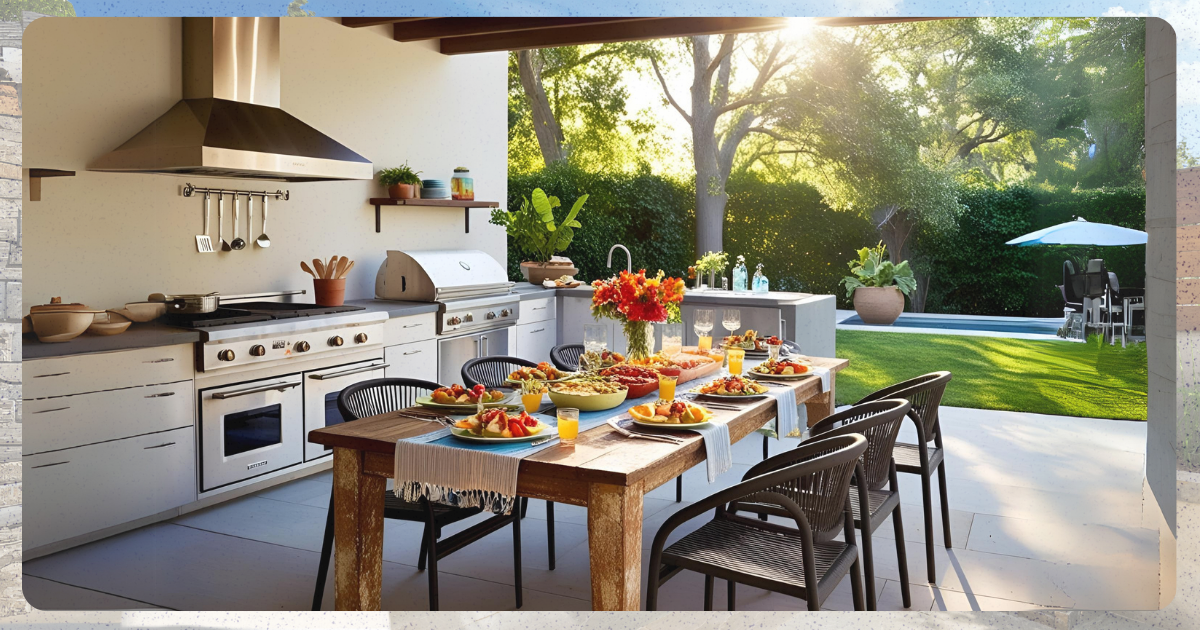
Key zones include:
- Cooking zone: Usually a grill or stovetop.
- Prep and serving zone: Countertops for ingredient prep and plating.
- Cleaning zone: Sink area for washing utensils and produce.
- Storage zone: Sealed cabinets to protect tools and ingredients from weather and pests.
Clear zoning makes the space organized and improves functionality. Not to mention, it minimizes trips and other accidents within the space and keeps everything within reach—all the makings of a comfortable kitchen.
Things to Consider for Your Project
Designing an outdoor kitchen involves smart budgeting, durable materials, and the right mix of DIY and professional work. Simply choosing to adhere to your preference instead of following a standard that does not work for you can make a big difference in cost, safety, and even longevity.
Here are some of the things you should consider for an outdoor kitchen:
- Budget—Set realistic expectations for design, materials, and labor. Plan a clear budget from the start to prevent yourself from overspending. Plus, this strategy allows room for unexpected costs.
- Permits and Compliance—If you are building an outdoor kitchen instead of a simple renovation, permits are always necessary to keep in mind. This encompasses the scope for utilities like plumbing, electrical, and gas. This process helps make sure that your project meets local regulations and avoids fines, delays, and safety hazards.
- Deliberate between DIY vs. Professional Work—Knowing what you can do yourself versus when to hire experts keeps the project safe and efficient. DIY tasks can save money, but licensed professionals should handle complex work like wiring or plumbing.
- Material Durability—Outdoor kitchens face sun, rain, and humidity. Choosing weather-resistant materials ensures your kitchen lasts longer and requires less maintenance.
- Aesthetic and Home Integration—One of the most important things to consider is the aesthetic of your kitchen.It should blend well with your existing outdoor space, unless you’re comfortable with visual chaos. A cohesive design increases the visual appeal and overall value of your home.
Outdoor Kitchens Are the Future of Filipino Homes
The traditional dirty kitchen is making way for outdoor kitchens designed for function and style. With thoughtful layouts, distinct zones, and materials suited to local conditions, these kitchens improve cooking efficiency and outdoor living. Whether you build it yourself or hire experts, a well-designed outdoor kitchen adds comfort and value to any home.
References
This Old House. (n.d.). A Comprehensive Guide to Building an Outdoor Kitchen. This Old House. Retrieved May 22, 2025, from https://www.thisoldhouse.com/yards/21016432/how-to-build-an-outdoor-kitchen
Ward, S. (2018, February 23). Designing Outdoor Kitchens: 10 Things to Consider. Danver Stainless Outdoor Kitchens. Retrieved May 22, 2025, from https://danver.com/blog/designing-outdoor-kitchens/

